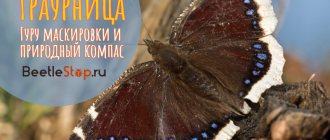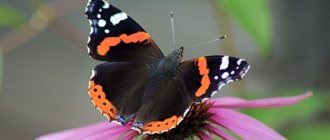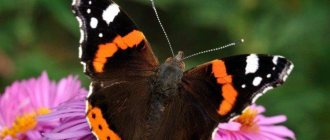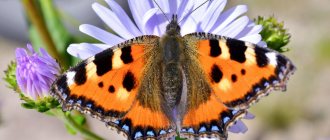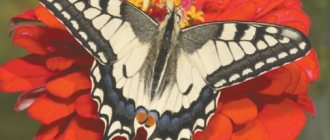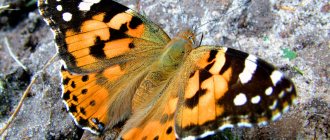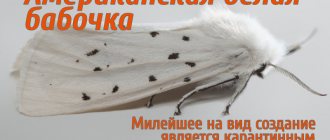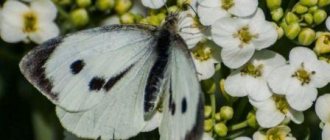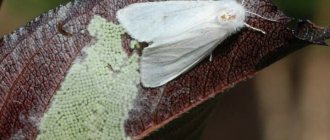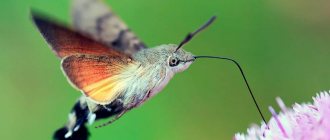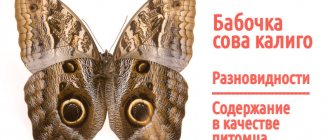Day butterfly, family Nymphalidae. In science, this beautiful butterfly is called Vanessa atalanta. The Admiral butterfly has velvety black wings (span 5-6 cm). Many insects are similar to each other. The admiral butterfly resembles a hives, but they look more refined and brighter. Its calling card is the characteristic orange ribbons on its wings, thanks to which the insect received its unusual name.
Keeping at home
Fauna lovers keep various insects as pets, including butterflies.
It is better to take Lepidoptera when they are caterpillars. The insect is placed in an aquarium or plastic container filled with food plants. The top of the container is covered with a mesh to provide air access. Food is replaced every day. The leaves are periodically sprinkled with water. During the pupation period, the humidity in the container should be 80-09%. For young adults, it is necessary to provide a place for spreading their wings. A vertical branch will do. How long does the admiral butterfly live at home? Don't expect the insect to stay in your home for a long time. The life of a moth is short; even in safe conditions it will live no more than 3-4 weeks. The pet will need a certain temperature and humidity, as well as food.
The diet of domestic butterflies includes a solution of honey and fruit juice. Preparing the syrup is quite simple - dilute a teaspoon of honey in 6 portions of water. You can offer the insect juicy cut fruits (banana, plum, peach). It is enough for the butterfly to touch the honey solution with its paw to identify it as food.
Story
A rich palette of colors and intricate patterns on the wings distinguish butterflies from other insects. It is no wonder that these sublime creatures are given the names of heroes of ancient myths. The admiral butterfly is named after Vanessa Atalanta (from the Latin: vanessa atalanta). Carl Linnaeus chose for the new species the name of the daughter of the hero Scheneus, who dreamed of a son. In Ancient Greece, it was believed that an upset father got rid of Vanessa by throwing her off a mountain. A beautiful girl spent her life in the forest. See what types of butterflies exist.
There are two known versions of the origin of the name Admiral. According to the first, the name comes from a Turkish word that translates as “lord of the seas.” Although the butterfly prefers to live in meadows, it easily goes on long journeys and flies across bodies of water.
The second version is marine - the insect was so called because of its color. Red stripes on a dark background are reminiscent of admiral's ribbons - the kind that fleet commanders had.
Etymology of the name
The admiral day butterfly was described by Carl Linnaeus in 1758 from specimens collected in Sweden. The name of the species is given by the name of the heroine of the ancient Greek myth. Atalanta was the daughter of King Jasius of Arcadia and Clymene. From the ancient Greek language this name is translated as “unshakable.” The father wanted to have only sons and therefore ordered his daughter to be left on Mount Parthenius immediately after birth. The girl was nursed by a bear and later found by hunters in the forest. Atalanta became famous after she and her lover Meleager took part in the hunt for the Calydonian boar.
The Russian name for the butterfly has nothing to do with the military rank of “admiral”. The insect is so called for the bright colors of its wings and comes from the English word “admirable”, which translates as “wonderful”.
The English name of the insect, red admiral, translates as “red admiral.”
Photo credit: Toni Wöhrl, CC BY-SA 4.0
Features of color
Having seen the flourishing of these insects, many wonder whether moths are dangerous. In fact, they are no more dangerous than the daytime varieties, but the pigmentation of the moths deserves attention.
The color of butterfly wings has a dual nature: structural and pigment. This means that the scales that are located on the surface of the insects’ body contain pigment. It is this substance that absorbs the sun's rays or simply daylight and reflects them, due to which the solar spectrum of shades visible to the human eye appears. As for the structural part of the color, it appears as a result of the refraction of the sun's rays, which does not require the presence of pigment.
Important! Moths have predominantly pigmented coloration
Ways to protect yourself from enemies
The moths of Russia, and all others, are created by nature in such a way as to have protection from ill-wishers.
A list of defense mechanisms of moths is presented below.
Construction of shelters: different subspecies of moths organize similar protective structures for themselves. For example, caseworms and bagworms. The caterpillars of these moths, some time after hatching, build houses around which they attach pieces of foliage and various debris.
These shelters are designed in a special way so that the larva protrudes from them just enough so that in case of danger it can quickly hide inside. The house grows with its owner, at least until she grows up and becomes a pupa (this size is approximately 4-5 cm). After the allotted time, the butterflies come out, but only if we are talking about males. The females stay in these houses longer, until they are fertilized by the male and lay eggs.
Defensive body structures, including hairs and glands, are also defense mechanisms for moths. Do moths bite, having such a formidable weapon? The answer is obvious: only if necessary.
Many caterpillars have a series of bristles or hairs that can burn with poison hidden in the skin glands. During an attack, a dangerous mixture is sprayed from the tip of the bristles, which irritates the skin of the enemy.
In addition, insects use the following means of protection:
- glands in the larvae, with the help of which they cover their own bodies with a liquid that repels approaching predators;
- individual individuals begin to actively move when the enemy approaches, or pretend to be dead, or curl up into a tight ball;
- the larvae, at the moment of approaching danger, can fall from the branches on which they live, hanging on thin silk threads (the individual returns back along the same thread, slowly moving along it with its legs located on the chest and oral appendages);
- hawk moths have dorsal growths that look like horns, which they point towards approaching danger;
- insects can defend themselves with the help of long, prickly hairs covering their body.
The pupae of moths, so helpless in appearance, also have mechanisms to protect themselves from a sudden enemy attack:
- pupae living in the soil are colored in colors that make them invisible;
- moths weave silk cocoons (in the silkworm, such shelters can have up to three layers - loose, dense and filmy), in which they hide from attacks by predators.
Photo and description of the urticaria butterfly: appearance and internal structure
The length of the wings of the urticaria, which is also called chocolate, varies from 20 to 25 mm. In scope they reach 40–60 mm. Their color in males and females is difficult to distinguish with the naked eye. The outer surface has a brick-red hue and is strewn with black spots. At the anterior side of the wing triangle, which connects the base to the apical angle, the wings are separated by yellow intervals. There is a white spot at the top of the front wing.
The basal half of the hind wing is brownish-brown, the outer half is brick-red. These zones are clearly demarcated. Along the outer jagged edge of the wings there are bluish crescent-shaped spots. Their underside is brownish-brown. There is a transverse wide yellow stripe on the front wing.
The inner surface of the wings is brownish with light spots. Brown hairs grow on the abdomen and chest of a rich brown color. Insects have 3 pairs of legs. Shortened forelimbs without claws do not participate in the process of locomotion. They are responsible for a soft landing. There are spurs on the shins of the forelimbs. The insect cleans the snot with them.
The body of the urticaria is covered with a chitinous shell. The head is round in shape with a somewhat flattened occipital region. Compounded eyes are round or oval. They occupy most of the lateral area of the head. It also has a long black proboscis. With its help, the chocolate maker sucks out the nectar. During flight, it curls up to form a spiral.
The chest consists of 3 segments, the anterior of which is significantly smaller than the others. The elongated cylindrical abdomen is formed by 10 ring-shaped segments, each of which has spiracles. Club-shaped antennae are located on the border of the parietal and frontal regions of the head. Antennas perform important functions: they help their owner navigate in space, detect air vibrations and smell. A description of the insect would be incomplete without a photo. Below you can see what it looks like.
The chocolate butterfly has a perfect nervous system and sensory organs. The first consists of the peripharyngeal ring and the ventral nerve cord. The result of the fusion of clusters of nerve cells is the brain, which controls movements. Regarding circulation, digestion and respiration, these involuntary functions are controlled by the sympathetic nervous system.
The circulatory system is lacunar, the respiratory system consists of tracheas, through which oxygen flows to the internal organs and tissues. The excretory system is represented by a bundle of Malpighian vessels, closed at the tops, and flowing into the intestine at the bases.
The reproductive system in females is formed by 2 ovaries, which pass into a tubular oviduct. The right and left ducts are combined into a single unpaired organ, through which mature eggs are released. After fertilization, sperm accumulation occurs in the spermatic receptacle. The reproductive organs of males are formed by 2 testes, which pass into the vas deferens and are united by an unpaired ejaculatory duct through which the seed is excreted.
Yellowtail (Euproctis similis)
Small butterfly. The forewings are 16–19 mm, white, monochromatic, or with a small grayish spot at the rear corner. The body of the butterfly is covered with thick white hairs, yellow in the lower part of the abdomen, the wings are also white, on which two black dots clearly stand out. The end of the abdomen is covered with orange-yellow hairs, more abundant in females, which is why it got its name. These hairs are separated and used by them to camouflage the eggs they lay.
The yellowtail lives mainly in park areas, deciduous forests and orchards.
Adult years occur in the second half of June and July.
Yellowtail (yellowtail), caterpillar
The caterpillars are black, with two longitudinal red lines on the back, and covered with long grayish hairs. It feeds on the buds and leaves of apple, pear, bird cherry, rose hip, as well as willow, birch, poplar, aspen, oak, and hornbeam.
Rainbow
The rainbow butterfly, or the great butterfly (Apatura iris), is a large, very beautiful butterfly, its range extends from England to Japan across the entire temperate part. The top of the wings is black or brownish-black with a white band, the wingspan is up to eight centimeters. Males stand out with a beautiful iridescent shine against a black background.
Iris or Greater Iris (Apatura iris). © Ervin Szombathelyi
These butterflies are shy and fly quickly. They usually stay high in the treetops. You can spot them on country roads after rains, where butterflies happily drink water from puddles. They are also attracted to horse or cow dung, as well as carrion. The smell of cheese also attracts rainbows.
Classification
Admiral is the type species of the genus Vanessa. It is divided into two geographically isolated subspecies. Data on intraspecific taxonomy are provided by Field and Markku Savela on the website. (checked 10/06/2019).
Below is information about the admiral varieties.
Vanessa atalanta atalanta (Linnaeus, 1758)
Found in Eurasia and North Africa. The Eurasian subspecies has a narrower white band at the top of the forewings and smaller black spots on the orange band on the hindwings.
Vanessa atalanta rubria (Fruhstorfer, 1909)
Lives in North America. This subspecies shows slight variations in color throughout the year. Butterflies of the summer generation are somewhat darker and larger than spring individuals, and the stripe on the forewing is narrower and more reddish in color.
Photo credit: Emmanuel Boutet, CC BY-SA 3.0
Apollo
Apollo (Parnassius apollo) is an insect that was named after the leader of the muses of the ancient Greek god Apollo, who personifies male beauty. A very beautiful butterfly, it is extremely rare and is under strict protection. A large white butterfly with black and red spots on its wings, the span of which reaches nine centimeters.
Apollo butterfly (Parnassius apollo)
The distribution area is huge - from the Pyrenees through the Alps, Carpathians, Caucasus to Altai. In total there are about 600 forms of this rare species. They fly slowly, tend to glide, and are not shy.
The caterpillar is velvety black, the length of an adult caterpillar is up to 5 cm. The food plant is various types of sedum. It feeds only in sunny weather and hides the rest of the time. Pupates on the ground.
Blueberry (lat. Polyommatus icarus)
A small, cute butterfly with an unusual color of wings. Moreover, only males are painted azure, while females have brown wings.
Blueberry Icarus is distributed unusually widely: throughout extratropical Eurasia.
blue butterfly
The eyes painted on the back of the wings are small. Therefore, they will not be able to scare a predator. But bluebirds use their eyes to disorient the birds. Some pigeons have their heads “painted” at the bottom of their wings. When a bird pecks a butterfly on this head, only a piece of its wing remains, and the butterfly manages to escape.
Blueberry Icarus
Bluebirds have one interesting feature. The young caterpillars that hatch from the egg first feed on the leaves. They secrete a secretion with a special smell, thus “disguising” themselves as ant larvae. They take them to the anthill and feed them along with their own offspring. Moreover, the caterpillars not only rob the larvae, but also eat them. However, the ants have found a way to resist these insidious predators. The smell of their larvae is constantly changing, and only those caterpillars survive that best managed to adapt to the standard. This does not allow the bluebirds to increase their numbers too much and bring the anthill to death.
Lifestyle
In our conditions, the butterfly is found from late spring to mid-autumn. In May, moths arrive from the south. They multiply, and with the onset of cold weather they fly south again. If it is cold in our latitudes, the generation develops in warm countries. In northern Europe, adults (adults) cannot overwinter.
In the 2nd half of the day, males defend temporary territories on bushes or trees. Females lay eggs on various types of nettles and similar plants. The caterpillars are black with white dots and feed on nettles. When the caterpillar begins to pupate, its head falls off. The pupal stage does not last long.
Variable moth, or summer, or spring networt (lat. Araschnia levana)
A small butterfly of the Nymphalidae family. English name - Map.
Variegated winged wing, spring form
It has clear seasonal dimorphism, as it occurs in two forms (spring and summer). The 1st generation (first form) has wings that are yellow-orange with black spots on top and a white mesh pattern on an orange background underneath.
Variegated winged wing, spring form
The 2nd generation (summer form; f. prorsa) differs sharply from the spring form: it is black with white stripes; Only yellow and orange spots resemble the spring form.
It is believed that the difference in color between spring and summer butterflies is caused by freezing of the pupae from which butterflies of the spring generation emerge. However, the color can also be affected by the length of daylight hours. At a temperature of +26 °C, caterpillars reared around the clock in the light gave a summer form, and with a short day (9 hours) - only a spring form. Previously, these forms were considered two different species.
Variable wingwing, male and female
Caterpillars feed on nettles.
Mourning butterfly
09.06.2018
The daytime mourning butterfly (lat. Nymphalis antiopa) belongs to the Nymphalidae family. It got its name because of the similarity of its color to the cape of professional mourners, which appeared in Europe in the 15th century. After 3 centuries, it has already become a universal symbol of mourning among most European peoples.
The scientific name was given to the insect by Carl Linnaeus in 1758 in honor of Antiope, queen of the Amazons and the main character of Antonio Vivaldi's opera Hercules at Thermodon.
Spreading
The species is widespread in the Palearctic region. It is found in Europe, Asia and North America. On the American continent it is observed almost everywhere from the central regions of Mexico to the southern provinces of Canada. The Eurasian population lives in a zone of temperate continental climate, occasionally migrating to the south.
The northern border of the range runs in the north-west of Scandinavia and along the outskirts of the Siberian tundra. The mourning butterfly also lives in the Far East and Japan. It appears in small quantities in the summer and autumn in the UK.
The insect prefers to live in light and moist deciduous forests and often appears in parks and orchards. During flights, it stays at an altitude of up to 2000 m above sea level and is able to fly over not too high mountains.
Behavior
Mourning flowers are very rarely seen on flowers. They feed primarily on tree sap and fallen, rotting fruit. They are attracted to the excrement of various animals and the aroma of fermenting foods.
Representatives of this species appear only in one generation. Subspecies are unknown, but there are many morphs that differ in brightness of color depending on the time of year and habitat. The adults that appear in the spring are distinguished by a more faded outfit.
Butterflies are prone to long migrations and often set off on journeys immediately after they are born. The duration of the flight depends on weather conditions. In the summer heat it usually takes several days.
Mourning birds emerge in mid-July.
Butterflies can live until the beginning of June next year, and in the mountains even until August. After wintering, they often appear in places significantly distant from their birth, including in large populated areas. Most insects die in winter, unable to withstand the frost. Individuals that appear in spring have a less spectacular coloration.
The duration of the flight depends on weather conditions. On too hot days it is significantly reduced. In the first phase of flight, males predominate, but then the sex ratio levels out. Males make patrol flights, looking for females sitting on plants.
Reproduction
The female lays round, yellowish eggs on the branches of food plants in a spiral shape. One clutch can contain up to 100-200 eggs with a diameter of about 0.8 mm. In Europe, masonry is most often done on ash willow (Salix cinerea), and in North America on black willow (Salix nigra). In addition to these, other trees are used, such as poplar (Populus), elm (Ulmus), birch (Betula) and hackberry (Celtis).
Black caterpillars with white speckles and reddish spots on their backs appear between June and July. They all stick together and spread out in different directions after the last moult just before pupation, which occurs on low bushes, stones, walls and even fences.
In search of a suitable place for it, caterpillars are able to crawl relatively long distances.
Light brown or grayish pupae are located upside down and are covered with small needle-like outgrowths. Many of them are affected by various parasitoids, usually Hymenoptera from the family Ichneumonidae. The pupal stage lasts about 11-15 days.
Description
The largest individuals have a wingspan of 90 mm. On average it is 62-75 mm. Sexual dimorphism is weakly expressed. Females are slightly larger than males.
The main color background is dark brown or almost black with a cherry tint. A yellowish border is clearly visible on the wings, with blue or bluish spots located near it. On the underside, the wings are darker in color with a light yellow border. The antennae are brown.
The length of the tracks is 50-55 mm. They have long black spines and are covered with soft, short hair.
In a number of regions, the mourning butterfly has been recognized as a rare species in recent years and is included in the Red Book.
Hebe the Bear
The she-bear Hebe lives in the steppe zone of our country. The wingspan of this butterfly reaches 55 millimeters. Their forewings are light, have black spots at the outer edge, and in the center there are 3 narrow black bands. The hind wings are reddish with black spots. These are night butterflies. They fly from May to July.
There is an opinion that the thick “fur” of the caterpillars helps them insulate themselves on cold nights. In any case, the butterflies were called “bears” for this thick hair covering of their caterpillars. Warty hairy bear caterpillars feed on a wide range of host plants, but they are especially fond of a variety of grasses.
Among the bears there are pests - for example, the American white butterfly Hyphantria cunea. Young caterpillars of the American white butterfly build a web nest and live together in it. During the day, the caterpillars leave the nest and eat leaves, and in the evening they return to it and spend the night together. Having matured, the caterpillars leave their “native nest” and live alone, and then pupate.
Caterpillars of the bear Spilarctia imperialis also live in colonies, constructing a common web nest. This helps protect against many non-specific predators - not just any insect will get into the thick of the web. But the ground beetle Parena perforata lives right in these nests. More precisely, its larvae live in the nest and feed to their heart's content without leaving the nests of these caterpillars. The only thing that limits the larva is the size of the caterpillar: small ground beetle larvae cannot cope with a hefty caterpillar and are forced to make do with small caterpillars.
The Kaya bear is one of the most common in our country; it is distributed from the European part of Russia to Siberia and the Far East. This relatively large butterfly reaches 80 mm in wingspan. The butterflies are found in July-August and their wings vary in colour, but are usually brown with a yellow and white pattern - a good example of distinct colouration. The hind wings and abdomen are brick red with shiny black spots. An alarmed female bear immediately opens her “camouflage” on her front wings, showing black or blue eye-shaped spots on her red hind wings, and immediately shoots a toxin from the glands located in her abdomen at the enemy struck by her red underwear. The caterpillars, like most bears, feed on herbaceous plants, and also on honeysuckle, mountain ash, willow, and can eat raspberries and apple trees.
It is known that many butterflies (including bears) hear well. Between the chest and abdomen, bear butterflies have a tympanic organ that hears ultrasound in the range of 3-100 kHz. Thanks to this organ, the butterfly hears the ultrasonic cry of the bat, which is tracking it. After this, he performs an anti-mouse maneuver, falls with a turn, sits down and waits until the danger has passed.
Ursa bears are famous as the most talkative family of butterflies. Indeed, many of them make a variety of sounds. At the same time, some bears have a perfect sound apparatus (like cicadas): the timbal plates, sharply returning to their place after the muscles change their curvature, emit a loud sound. The bear butterfly locates the bat and can communicate with other individuals of its species. Some female bears can emit sound using special “castanets,” which are dense chitinous plates on the edges of their hind wings. When the wings are brought together, the plates hit each other and click. Moreover, the chamber under the folded wings serves as a resonator, amplifying the sound.
Some female bears were not satisfied with passive sound defense (evading encounters with a bat), but themselves went on the offensive: Cycnia tenera produces ultrasonic clicks of considerable force (“ticks”), which prevent bats from finding their direction. Other mother bears are inedible to bats. And in order to reduce the number of mutually unpleasant conflicts, mother bears, in response to the “hunting howl” of a bat, emit identification ultrasonic signals that allow them to be distinguished from other edible butterflies - something like “I am completely inedible, and you know it.” This signal is “read” by the bat as an indication that the object is inedible.
It is less known that butterfly caterpillars also hear and this is very beneficial for them. Many wasps, such as ammophila wasps, hunt butterfly caterpillars to feed their larvae. So, they track caterpillars by smell - they “sniff out” the caterpillar along the trail in the grass forest. And the caterpillar hears the wasp: it perceives its buzzing and hides - it freezes or falls from the blade of grass. True, she can hear it from a maximum of ten centimeters away, but sometimes this even saves the caterpillar’s life - how come the winged huntress hasn’t yet seen the fat caterpillar’s body, still wandering between the stems?
Butterfly: description and photo. The structure and appearance of butterflies
The structure of the butterfly has two main sections: the body, protected by a hard chitinous shell, and the wings.
A butterfly is an insect whose body consists of:
Head, inactively connected to the chest. The butterfly's head has a round shape with a slightly flattened occipital part. The round or oval convex eyes of the butterfly in the form of hemispheres, occupying most of the lateral surface of the head, have a complex facet structure. Butterflies have color vision and perceive moving objects better than stationary ones. In many species, additional simple parietal eyes are located behind the antennae. The structure of the oral apparatus depends on the species and can be of the sucking or gnawing type.
- Breasts with a three-segment structure. The front part is significantly smaller than the middle and back part, where three pairs of legs are located, which have a structure characteristic of insects. On the shins of the butterfly's front legs there are spurs designed to maintain the hygiene of the antennae.
- The abdomen has the shape of an elongated cylinder, consisting of ten ring-shaped segments with spiracles located on them.
Butterfly structure
The antennae of the butterfly are located on the border of the parietal and frontal parts of the head. They help butterflies navigate their surroundings by sensing air vibrations and various odors.
The length and structure of the antennae depend on the species.
Two pairs of butterfly wings, covered with flat scales of different shapes, have a membranous structure and are penetrated by transverse and longitudinal veins. The size of the hind wings can be the same as the front wings or significantly smaller than them. The pattern of butterfly wings varies from species to species and captivates with its beauty.
In macro photography, the scales on the wings of butterflies are very clearly visible - they can have completely different shapes and colors.
Butterfly wings – macro photography
The appearance and color of the butterfly’s wings serve not only for intraspecific sexual recognition, but also act as protective camouflage, allowing it to blend into its surroundings. Therefore, colors can be either monochrome or variegated with a complex pattern.
The size of a butterfly, or better said, the wingspan of a butterfly, can range from 2 mm to 31 cm.
Migration is linked to nutrition
The range of the admiral's butterfly is only slightly smaller than that of the burdock, and within this range it is found in many habitats - suburbs, parks, gardens, wooded edges and paths, around wetlands, floodplains, wet fields and ditches - anywhere it may be close to various species of nettle, which are food plants for its caterpillar.
Most sources limit the caterpillars to nettles, but some add milk thistle, willow, and/or members of the plant family Cannabaceae (yes, that's a plant family), a family that mainly consists of curry and hops. It is believed that adults do not nest on flowers, but live on tree trunks.
In the afternoon, males are said to defend territories with semi-light-edged clearings and search for females to whom they are attracted. The question is whether the males actually defend a territory or simply chase around until they determine their species and sex by taking to the air several times. Some butterflies fly in a spiral upward to the treetops. Females fly slowly and purposefully in search of plants to lay eggs on. Butterflies scratch the surface of the leaf with their bristly legs and then taste it. If the admiral butterfly recognizes the plant, it will lay an egg on the upper surface of the host plant's leaf. The hatched caterpillar folds the leaf around itself and takes refuge inside.
Lifestyle
A description of the admiral butterfly will be incomplete without talking about the features of its lifestyle. The insect is a heat-loving species and spends the winter only in the southern regions. During migration, moths rise to a considerable height, where they are picked up by the wind and carried in the desired direction. This saves the insects' energy. The summer begins in May-June and continues until the end of September. One, sometimes two generations are replaced per year. The second generation has a darker color of the wings. The English name of the insect RedAdmiral (red admiral) accurately characterizes the unique coloring of the butterfly. The mobile species can be found in any unexpected places - on the river bank, in a city park, on a farm. Admirals are active on sunny days in clear weather. On rainy and windy days they hide in a shelter.
Information. Vanessaatlanta often rest on the trunks of oak or larch trees. Butterflies put their wings behind their backs and completely merge with the bark of trees. Their camouflage coloring hides them from predators.
Lepidoptera are insects with complete metamorphosis. They go through all stages of development: egg, larva (caterpillar), pupa, imago. How long does the admiral butterfly live? In favorable conditions, it is long-lived - the insect lives 9-10 months. For part of the allotted period, it remains in hibernation; it is the presence of diapause that explains its long existence. The fertilized female overwinters in order to immediately lay eggs the next year after waking up. In the North and Center of Europe, admirals do not stay during the cold period. They go on a seasonal migration south. It is less noticeable than in summer, when a large number of adults settle in gardens and parks rich in food.
Migrants that appear in the summer produce offspring on local plants. Young butterflies fly in July-August. They are not shy; if handled carefully, they can land on clothing or a hand. It is easy to distinguish between visiting and local admirals by the condition of their wings - travelers’ wings are tattered and faded. During the wintering period, moths look for a reliable shelter where they can hide not only from the cold, but also from enemies. Females hide under the bark of trees, fallen leaves, and hide in crevices. While sleeping, they run the risk of being eaten by birds or rodents.
General climate warming and mild winters have led to changes in the behavior of the admiral butterfly. Not all individuals go to wait out the cold season in hot Africa. Some remain in temperate latitudes. This decision is completely justified, because many insects die while covering distances of thousands of kilometers.
Nutritional Features
What does the admiral butterfly eat? Adults prefer to drink nectar from asteraceous plants:
- cornflower;
- thistle;
- ivy;
- blackberry;
- scabious;
- Asteraceae
At the end of summer, moths have the opportunity to expand their diet with overripe sweet fruits. They drink the juice of bursting peaches, plums, and pears.
Interesting fact. Admirals prefer rotten and fermented fruits.
Insect protection
The reduction in the number of Vanessaatlanta required the adoption of protective measures. In 1997, the insect was included in the Red Book of Russia. Several favorable years allowed the number of nymphalids to replenish. Security measures were maintained only in the Smolensk region. Negative factors affecting insects are deforestation, plowing of meadows, and treatment of gardens with chemicals. At the moment, admiral moths are not in danger of extinction. The colonies are actively replenished by insects migrating from the south. The admiral butterfly is considered one of the most beautiful species in Europe.
Harmful species of moths
The moth family has more than 23,000 species. About 2,500 live in the CIS. Among them there are many pests that eat up the vegetative and generative parts of plants, thereby worsening their growth, development, and fruit quality.
Pine moth
It lives everywhere where there are plantations of coniferous trees. The pine moth has the same body structure as all representatives of this family and is distinguished by its color:
- males are dark brown, have small patches of white or yellow on the wings and a large triangle at the base;
- the wings of females are rust-colored with yellow spots;
- a young caterpillar of green color with a yellow head, its size does not exceed 3 mm; as it matures, it acquires a yellow-green color with white longitudinal stripes and grows up to 3 cm;
- The green pupa is 12-14 mm long and turns dark brown at the end of the pupation stage.
The caterpillars feed on pine needles; in their absence, they do not neglect cedar, fir, and spruce. In dry summers they begin to actively reproduce and can destroy large areas of coniferous plantations. After an invasion of pests, trees lose their crown, weaken, dry out and are of no value to industry.
One pine moth caterpillar eats 3.5 kg of needles.
Mating begins in early summer. The female lays 28-30 eggs in rows, 4-7 eggs in each.
Moth was ripped off
The moth is not very picky about what it eats and happily harms all fruit trees.
Rose hips, willow, hazel, blueberries, and birch are not ignored. What does the gluttonous look look like:
- male with straw-yellow wings with black dots, wingspan reaches 5 cm, willingly flies into the light; years begins in mid-September;
- females without wings, white body with black spots; while the male is flying, he crawls up the trees closer to the top and lays yellow eggs under the buds;
- brown or yellow caterpillars emerge from eggs in April and eat the buds, causing damage to orchards.
A female moth can lay from 200 to 800 eggs.
Green moth
The green moth is quite large in size. The wingspan is 45-50 mm. Newly pupated butterflies are distinguished by their rich green color with transverse white stripes. As they age, the color of the wings fades.
It lives throughout Europe in bushes and forests. Prefers hazel and birch, but does not neglect other deciduous trees. The young caterpillar is brown, 25-30 mm long. Overwinters in the soil, under the bark. In spring it turns green with brown spots - reminders of the old color.
Moth tailed
Widely distributed in western Eurasia. The tailed moth has a distinctive feature - small tails on its hind wings. The young butterfly is lemon yellow in color, which quickly fades to cream. The caterpillars are brown with characteristic protrusions in the form of knobs.
It is rare to see the moth moth, due to its short life cycle. The short summer begins at the end of June and ends at the beginning of July.
Gooseberry moth
Lives everywhere, with the exception of northern latitudes. The gooseberry moth is distinguished by the original coloring of its wings, which varies from white to rich yellow shades. The pattern is variable and most often represents a wavy line on the front wings.
It feeds on the leaves of bushes. Before pupation, the caterpillar rolls up the leaf into a tube, securing it with a web.
Butterflies are active not only at night, but also during the day. Their flights are observed throughout the entire summer period.
Sorrel moth
The butterfly is not distinguished by its large dimensions and colorful coloring. The wingspan is 20-25 mm and has a nondescript beige color with a crimson edge. The sorrel moth prefers damp areas and feeds on buckwheat plants, sorrel, and knotweed.
Two generations appear in a year. The caterpillars are dark purple in color and have a light stripe on their back. The color of the pupa is grayish-brown.
Clover moth
Color and shape are very variable, due to its wide range. The background of the wings varies from white to yellow. There are 2 regenerations per year. The clover moth is found mainly in meadows and fields.
Flower moth
The flower moth affects barberry, hawthorn, thorn, and fruit trees. The color of the front wings of the butterfly is gray, brown with brown stripes and dark spots. It overwinters in the pupal stage, from which a light green caterpillar with a red dorsal stripe emerges. They chew out leaves and holes in flowers.
Flower moths can destroy 25% of foliage.
Reproduction
Vanessaatlanta moths are characterized by courtship and mating games. During the breeding season, males exhibit territorial behavior. They occupy good areas where food plants grow and drive away competitors. Each has a territory of 10 by 20 m. Moths patrol their own area, flying around the perimeter. Admirals often circle over the hills to spot and intercept a passing female from afar. The male flies for a long time after his partner, seeking her favor. Mating takes place over several hours. During this period, insects do not respond to external factors and are in a vulnerable position.
The fertilized female lays one egg at a time on the upper part of the leaves of the food plants:
- thistle (Carduus);
- stinging nettle (Urticadiolica);
- stinging nettle (Urticaurens);
- hops (Humuluslupulus).
Development of offspring
Initially they are light green, but as the embryo develops they become darker in color. The eggs are small, 0.8 mm in size, and are difficult to notice with the naked eye. A week later the larva appears. What does an admiral butterfly caterpillar look like? When emerging from the egg, it is green in color and the body is covered with bristles. The head is large, black and shiny. The size of the larva is 1.8 mm. Caterpillars live separately, building peculiar houses from rolled leaves fastened with cobwebs. The shelter is left only for food. After molting, a new, larger house is built.
As it grows, the color of the caterpillar changes. There are specimens of yellow-green, brown or black color. The body is completely covered with small white dots, branched spines and growths. There are light yellow stripes on the sides. The admiral butterfly caterpillar goes through 5 instars. This takes about 1 month. The first four instars take 3-4 days, the fifth is the longest. An adult caterpillar grows up to 35 mm. There are seven longitudinal rows of sharp spines on her body. The last larval stage takes 10 days.
At the end of development the larva stops feeding. She gnaws the base of the leaf so that the house hangs on the veins of the petiole. Inside such a structure, the caterpillar pupates upside down. The length of the pupa is 22-23 mm, the color is gray or brown with silver inclusions. The duration of the phase depends on the temperature. At +30°C, the adult appears in 6-7 days; if the indicator drops to +11-18°C, the time increases to 18-45 days. A young butterfly emerges from the pupa. Her wings are small and take time to spread.
Appearance and features
Photo: Butterfly of Russia Admiral
The front wing has a size of 26-34.5 mm, with a span of 50-65 mm. The upper surface is black, velvety brown.
Characteristic coloration of the front wings:
- there is a small tooth on the outer side of the ending;
- at the top a row of white spots runs parallel to the outer edge;
- a little closer to the head there is one wide, elongated spot;
- A curved carmine-red wide stripe runs diagonally.
Hind wing color:
- a carmine-red wide border runs along the lower edge;
- each of the five segments of the bright stripe has a black dot;
- in the extreme lower corner there is a double blue spot with a black outline.
A wavy, thin white stripe borders all four wings. The lower surface is paler in coloring, but very pockmarked. The front wings are ornamentally similar to the upper surface, but they are not so bright, complemented by bluish areas almost in the center of the upper edge. Coloring of the lower surface of the rear wings:
- the tobacco-gray background is dotted with black, dark-brown lines, small circles, and grayish stains;
- a larger whitish spot is located in the very center of the upper edge.
The back of the body is dark, black or brown, the abdomen is lighter brown or tobacco color. The chest is divided into three parts, each of which contains a pair of limbs. The role of the oral apparatus is performed by the proboscis. The butterfly's compound eyes are covered with bristles and have a crystalline structure. The antennae are club-shaped thickened in the upper part; they act as one of the sense organs. with their help, nymphalids can detect the slightest vibrations in the air and sense aromas.
Description of the admiral's butterfly
The admiral butterfly is found in Europe, North Africa, Eurasia and North America from northern Canada to Central America. It is also found in Hawaii, New Zealand and some Caribbean islands.
This butterfly can be found almost everywhere, from the coast and city gardens to the tops of the highest mountains. This butterfly mainly migrates to our shores, although sightings of individuals and immature stages in the first few months of the year mean that this butterfly is now considered a resident of our country.
Typical habitat is rich, moist lowland forest containing larval host plants such as nettle (Urtica dioica) and nettle (Boehmeria cylindrica). V. atalanta is commonly found in sunlit forest openings or edges, often in or near stream beds, wet fields, city parks, and ridgetops.
Appearance of a butterfly
Adult: wingspan is 4.5-6.5 centimeters. The upper side of the wings is black. The forewings have a broad orange median stripe with white spots towards the apex. The hind wings have a marginal orange stripe. Both the front and rear wings have a series of curved white streaks along the edges. The undersides of the forewings are dark with white spots at the top and a pinkish-orange middle stripe. The lower parts of the rear wings are finished in marble.
butterfly admiral
The dorsal side of the wings is dark brown to black. The forewing has small white apical spots and a prominent red-orange median stripe, while the hindwing has a red-orange marginal stripe.
butterfly admiral wings from below
Butterfly Eggs: The eggs are light green and surrounded by a row of white vertical ridges.
Larva: The larvae are up to 3.5 centimeters long. They vary greatly in color. The head is black with short spines and hairs. The body varies from pale brown with a yellowish side stripe to black with small white spots and a white side stripe. Each segment has a transverse row of long branching dark or pale spines with reddish bases.
admiral butterfly caterpillar
admiral butterfly pupa
Message 2
The mourning butterfly acquired its name due to its dark and mourning coloration.
The top of the wings has a brown-cherry tint with a white or yellow border. The wings have blue spots with a black rim. The lower part of the wings is black and gray. They have small fur over the entire surface of the wings and body.
The butterfly is of medium size and its wingspan reaches 70-90 centimeters.
The mourning butterfly belongs to the nymphalidae family.
The color of the butterfly may depend on temperature changes during the development of the pupa. Sudden changes and drops in temperature can cause darkening of the wings and the disappearance of blue spots.
Lifestyle
The mourning butterfly begins an active lifestyle in April; it can be seen with the first rays of the warm sun.
The butterfly can be seen throughout the summer. The mourning bird lives in Asia, Europe, North America and Japan. It can also be found in Germany, England and Norway.
For life, the butterfly chooses meadows, forests, river banks and even mountains (no higher than 2000 meters above sea level).
Nutrition
Feeding on nectar is not typical for the mourning butterfly. The butterfly liked the fruits that had begun to rot, and was attracted by the smell of fermentation.
The butterfly needs more liquid. Due to this, she will not be able to live away from the reservoir. The mourner can often be seen drinking the sap of birch and other plants. Caterpillars can be found on fruit trees and bushes. Also, the mourning plant can be found in the field on the weeds.
